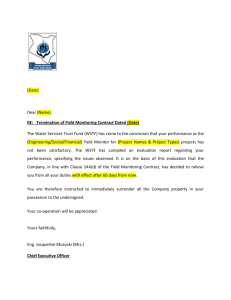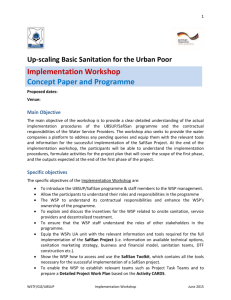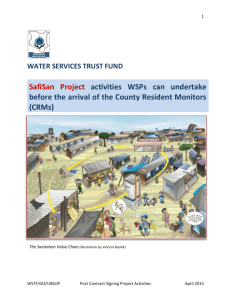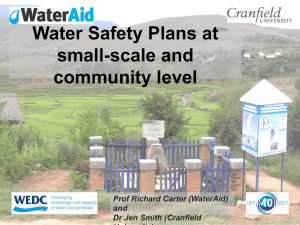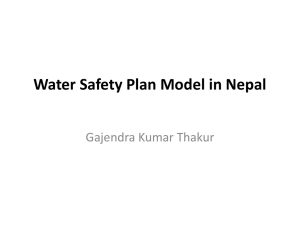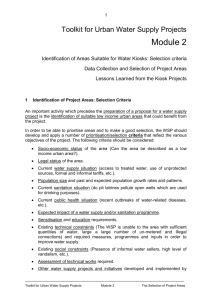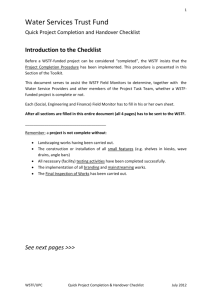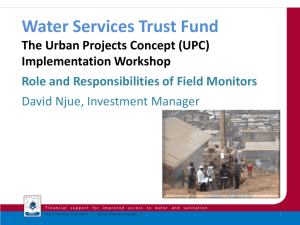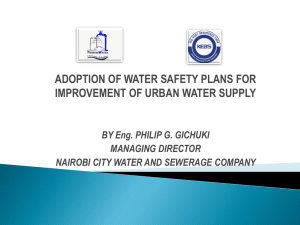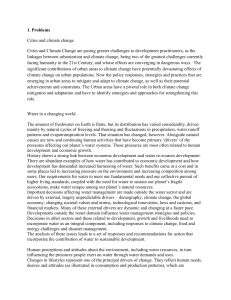Procedure for site selection and construction of DTFs
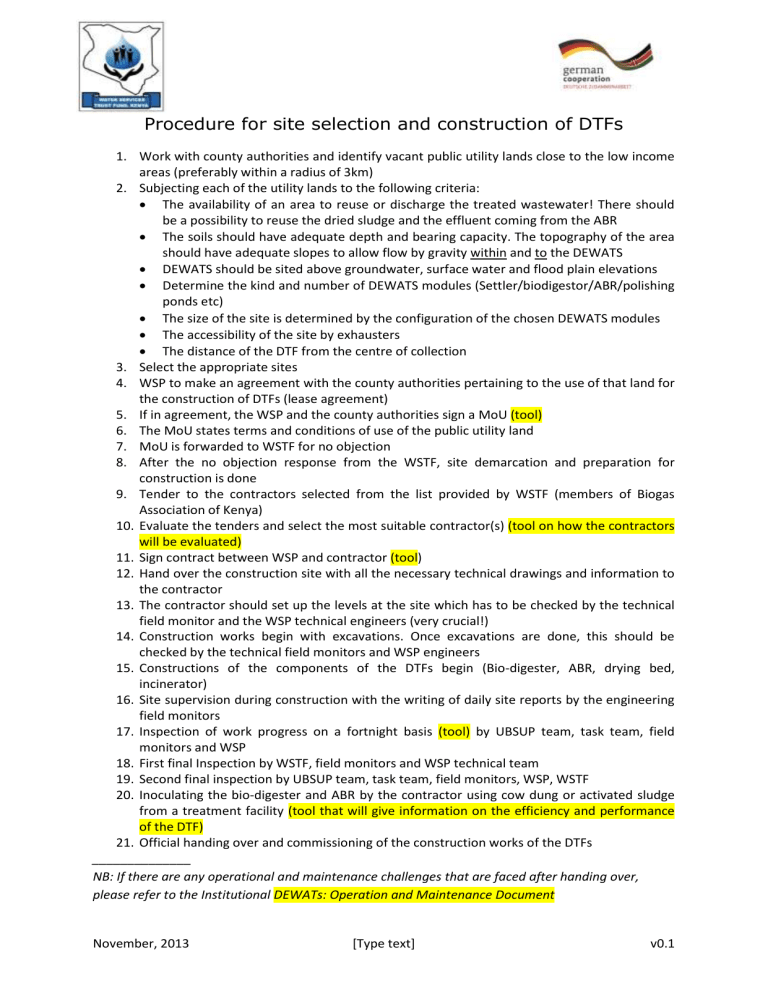
Procedure for site selection and construction of DTFs
1.
Work with county authorities and identify vacant public utility lands close to the low income areas (preferably within a radius of 3km)
2.
Subjecting each of the utility lands to the following criteria:
The availability of an area to reuse or discharge the treated wastewater! There should be a possibility to reuse the dried sludge and the effluent coming from the ABR
The soils should have adequate depth and bearing capacity. The topography of the area should have adequate slopes to allow flow by gravity within and to the DEWATS
DEWATS should be sited above groundwater, surface water and flood plain elevations
Determine the kind and number of DEWATS modules (Settler/biodigestor/ABR/polishing ponds etc)
The size of the site is determined by the configuration of the chosen DEWATS modules
The accessibility of the site by exhausters
The distance of the DTF from the centre of collection
3.
Select the appropriate sites
4.
WSP to make an agreement with the county authorities pertaining to the use of that land for the construction of DTFs (lease agreement)
5.
If in agreement, the WSP and the county authorities sign a MoU (tool)
6.
The MoU states terms and conditions of use of the public utility land
7.
MoU is forwarded to WSTF for no objection
8.
After the no objection response from the WSTF, site demarcation and preparation for construction is done
9.
Tender to the contractors selected from the list provided by WSTF (members of Biogas
Association of Kenya)
10.
Evaluate the tenders and select the most suitable contractor(s) (tool on how the contractors will be evaluated)
11.
Sign contract between WSP and contractor (tool)
12.
Hand over the construction site with all the necessary technical drawings and information to the contractor
13.
The contractor should set up the levels at the site which has to be checked by the technical field monitor and the WSP technical engineers (very crucial!)
14.
Construction works begin with excavations. Once excavations are done, this should be checked by the technical field monitors and WSP engineers
15.
Constructions of the components of the DTFs begin (Bio-digester, ABR, drying bed, incinerator)
16.
Site supervision during construction with the writing of daily site reports by the engineering field monitors
17.
Inspection of work progress on a fortnight basis (tool) by UBSUP team, task team, field monitors and WSP
18.
First final Inspection by WSTF, field monitors and WSP technical team
19.
Second final inspection by UBSUP team, task team, field monitors, WSP, WSTF
20.
Inoculating the bio-digester and ABR by the contractor using cow dung or activated sludge from a treatment facility (tool that will give information on the efficiency and performance of the DTF)
21.
Official handing over and commissioning of the construction works of the DTFs
______________
NB: If there are any operational and maintenance challenges that are faced after handing over, please refer to the Institutional DEWATs: Operation and Maintenance Document
November, 2013 [Type text] v0.1
